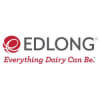The growing desire for green food and being constantly tuned into technology may seem typical of U.S. consumers today, but that cultural demographic is far from alone. Because many food and beverage manufacturers serve international and multicultural populations, these companies have to step back and recognize the global trends that impact purchasing decisions.
Daphne Kasriel-Alexander, consumer trends consultant at Euromonitor International, outlined several of these trends in a recent report, "Top 10 Global Consumer Trends for 2016." Based on the findings, manufacturers that use marketing to address fluid gender demographics and consumers’ concerns about green food, mental wellbeing, and being overconnected will succeed in 2016.
Gender Blurring
Gender stereotypes are becoming less prevalent as a trend Kasriel-Alexander calls "Gender Blurring" takes hold. In food and beverage, gender fluidity means product development and marketing strategies once aimed at a specific male or female demographic may need to change for brands to stay relevant. These cultural changes may become more visible in food and beverage marketing messages.
Marketing has been traditionally targeted at female consumers, particularly moms, who are presumed to be the primary food shoppers. But this may be changing. A report released by The Hartman Group last year showed that men make up about 43% of primary shoppers for their households, and men make the same amount of monthly store visits as women. To reach this demographic, manufacturers are tailoring their marketing messages, particularly in male shoppers’ preferred retail channels like club and convenience stores and online retailers.
Campbell launched a marketing campaign in October that depicted "real" family interactions with Campbell branded products. One spot, called "Your Father," featured two men feeding their son "Star Wars" soup, demonstrating Campbell's recognition of the varied nature of families and household makeups.
Greener Food
Consumers worldwide share similar concerns about green foods, mainly whether a product is all natural, has limited sugar or no added sugar, or has limited or no artificial ingredients. But about one-third or more of global respondents shared a number of other preferences for green food attributes and ingredients. This illustrates how strong these consumer desires for food and beverage are, regardless of country or culture.

A lingering deterrent for consumers who want to buy greener products is price. Manufacturers that use well-positioned marketing claims to overcome consumers’ pricing concerns may be able to tap that market of consumers who are as price-conscious as they are health-conscious.
"Lots of people when they buy green or organic products, their affects dissolve when they have to pay more at the checkout counter," said Kasriel-Alexander. "Brands that introduce more affordable green products have got a good strategy because ... they are appealing to the consumer who’s looking for innovative value and can offer them something that isn’t too much more than the non-organic or less green product."
Mental Wellbeing
"There’s a very good fit between wellbeing and what you put into your body, what you eat and drink," said Kasriel-Alexander. "Brands that emphasize that are likely to do better this year because this interest in health and overall wellbeing is so profound and so global."

But this movement isn’t just about appealing to consumers’ demands for healthier foods and beverages. Manufacturers are also engaging with consumers on a more personal level — consumers’ innate desire to feel better about themselves. By positioning better-for-you products with strategic marketing messages, manufacturers subtly remind consumers of the benefits of their healthy choices. In other words, to hit the right notes with consumers today and encourage them to buy, it’s about feeding their ego as much as feeding their bodies.
"If the food brand gives you brownie points for eating well and tells you how good you’re being to yourself by eating well and drinking well, they’ve got a winner there," said Kasriel-Alexander. "The consumer is struggling to live more healthily, and we’ve got lots of pressure to do that. Brands that tap into that are very wise."
Overconnected Consumers
The most obvious way to appeal to the "Overconnected Consumers" group is to create products that are friendly to an on-the-go lifestyle. This has led to many food categories creating snack-friendly versions of their products and to functional beverages that can serve as meal replacements.
But another option is for food and beverage marketers to appeal to analog product experiences and the nostalgia of days before modern technology. Coca-Cola and Hershey have debuted new campaigns recently that focus on classic experiences with their products shared among consumers and their families and friends. The campaigns themselves are digital, but they remind consumers of the nostalgia and associated with putting down their smartphone and enjoying foods and beverages in the moment.
Identifying these global consumer trends is a start, but manufacturers that strategically position their products and marketing messages to capitalize on current trends will have the advantage in the coming year. Manufacturers can stay on top of these cultural shifts to meet consumers’ evolving food and beverage needs in the moment, but it may take a careful re-evaluation of target demographics to get there.

















